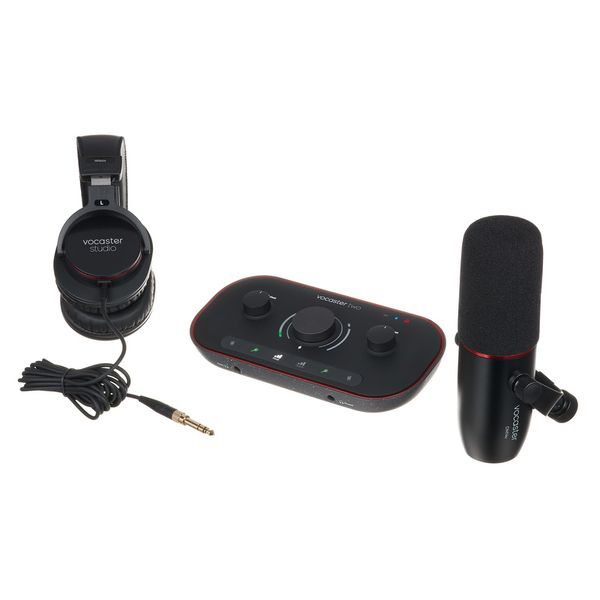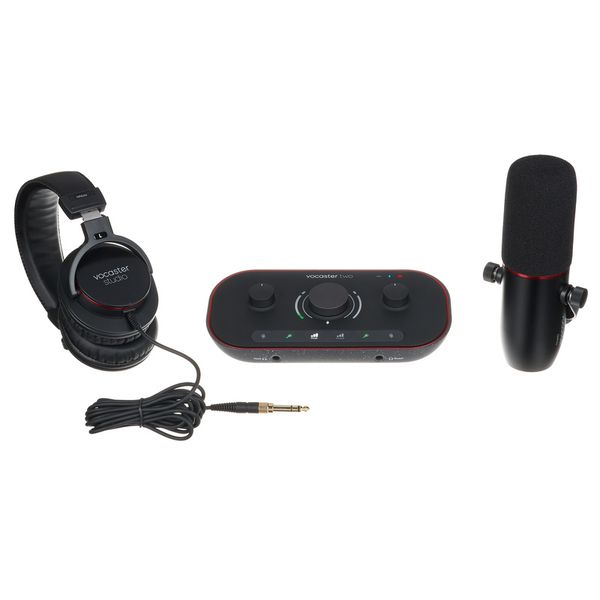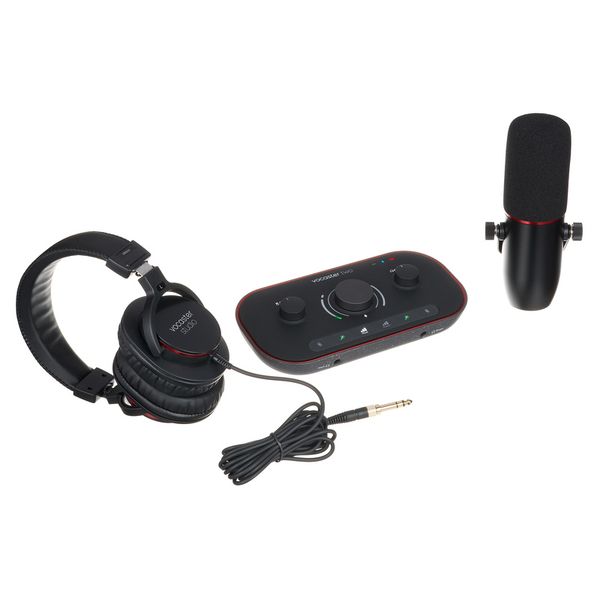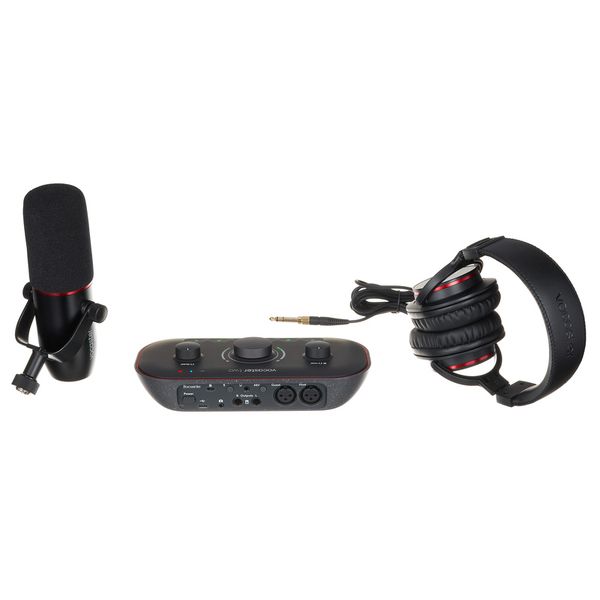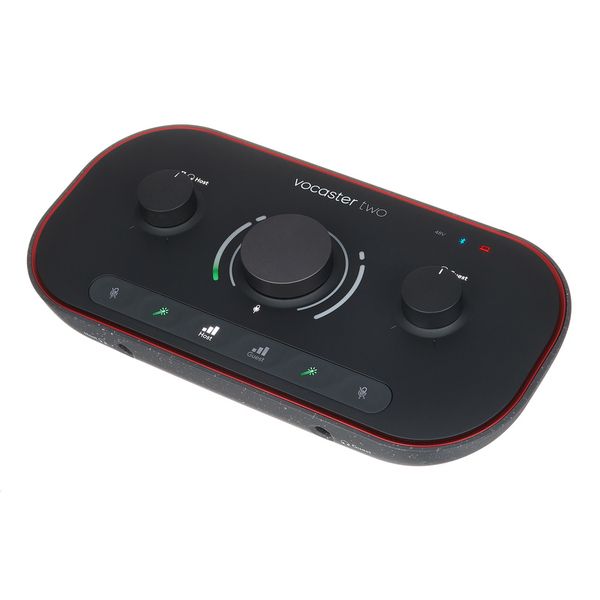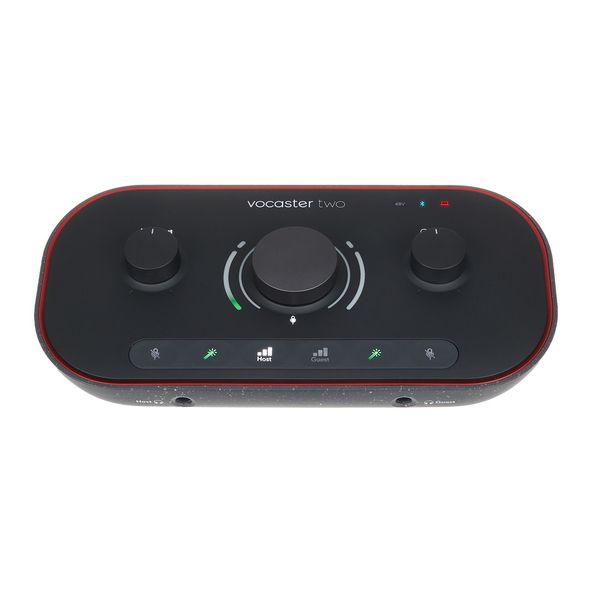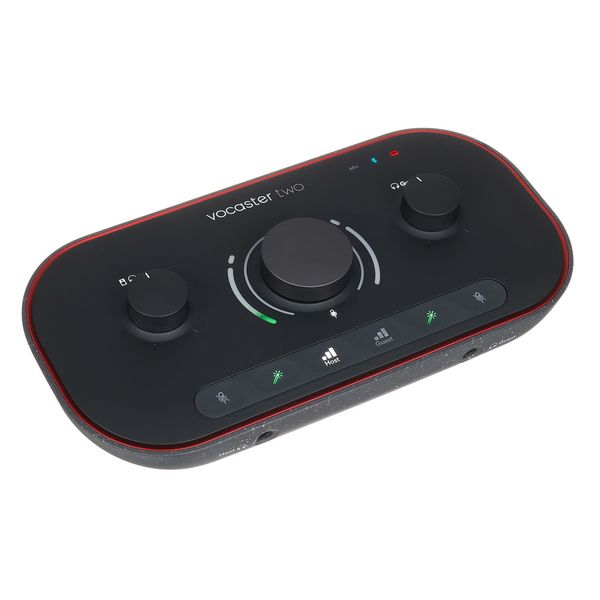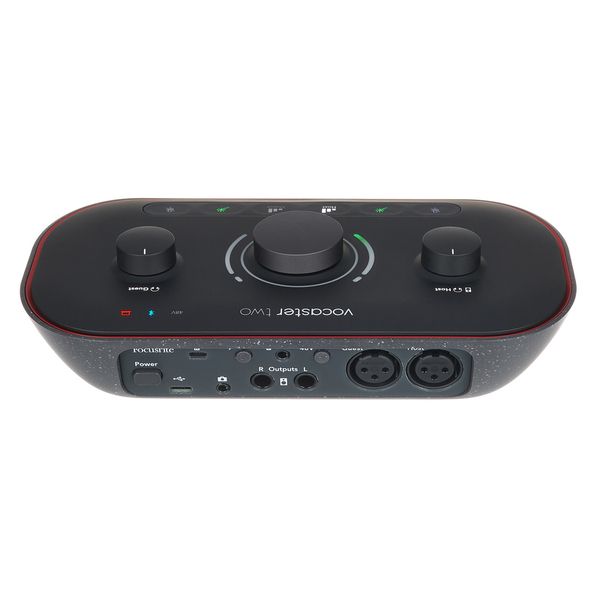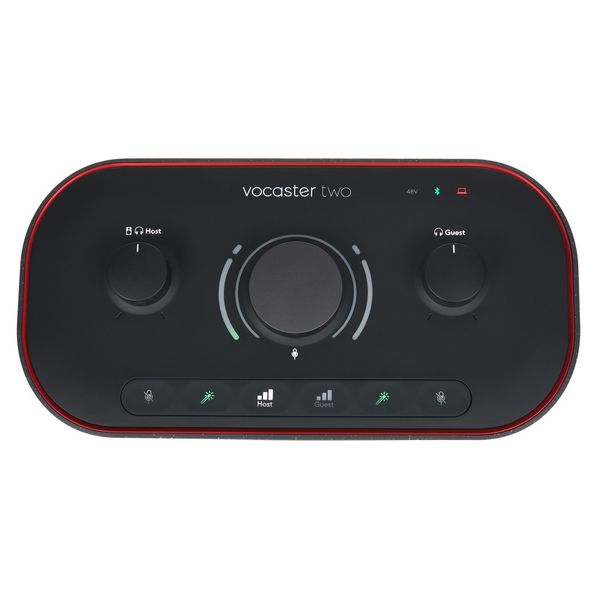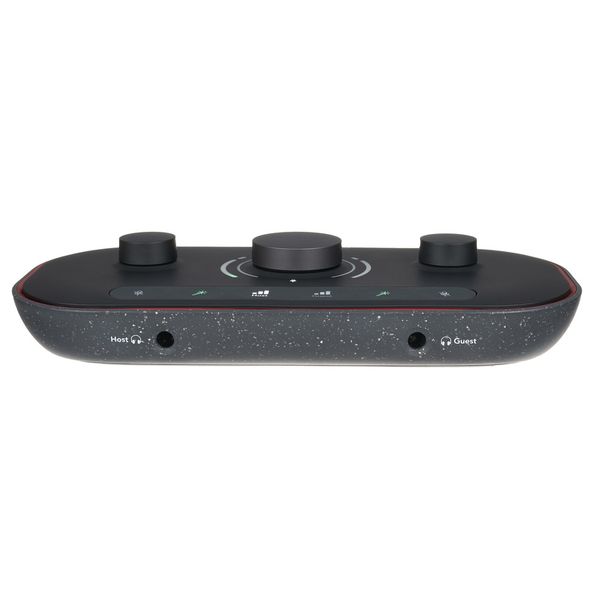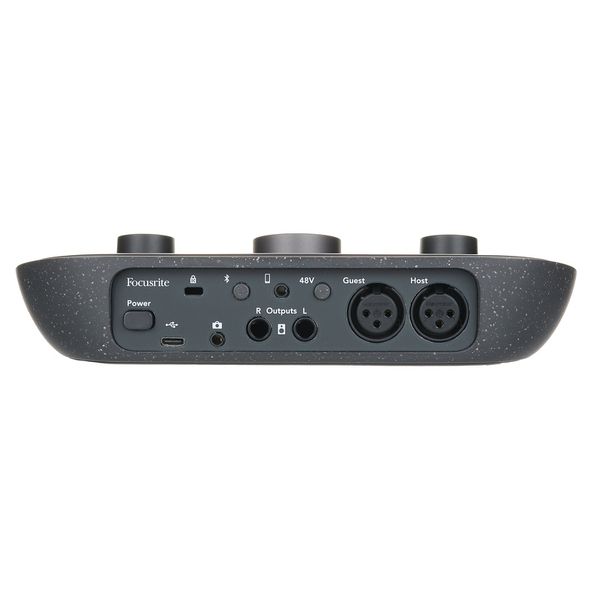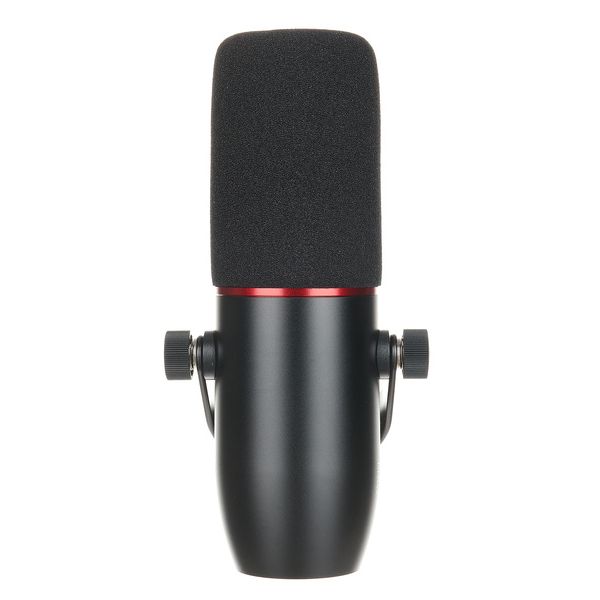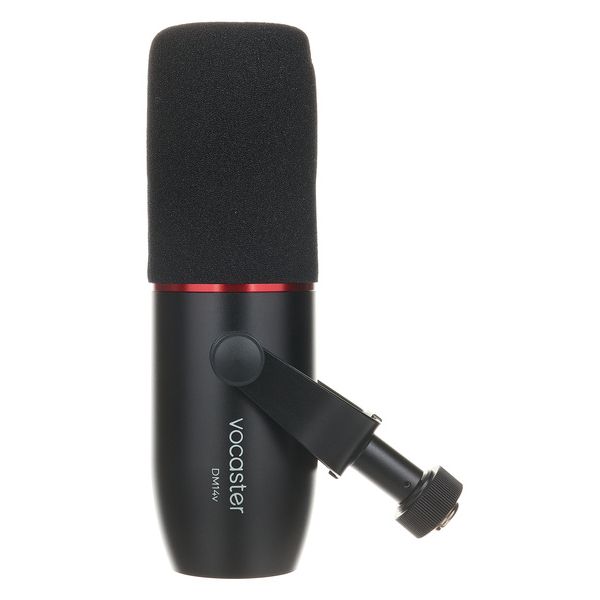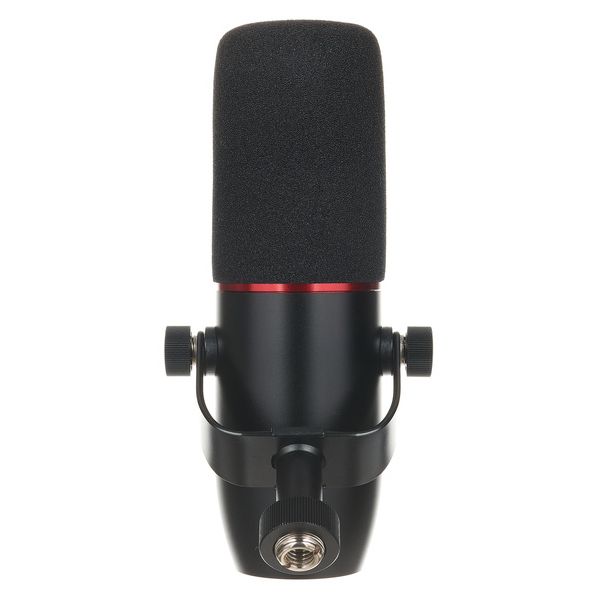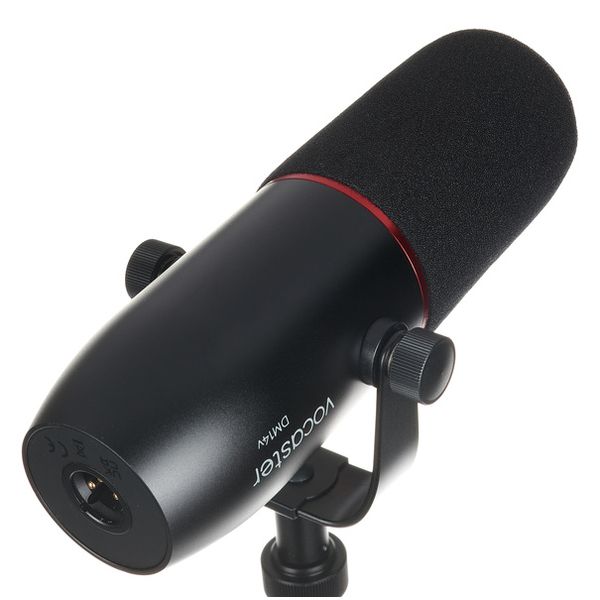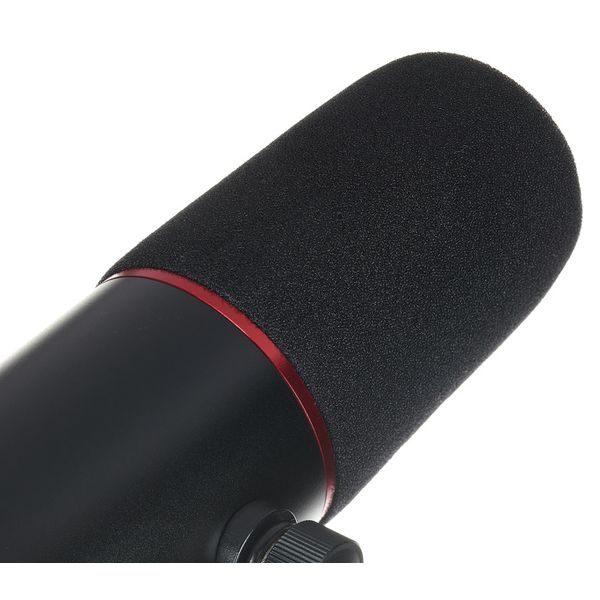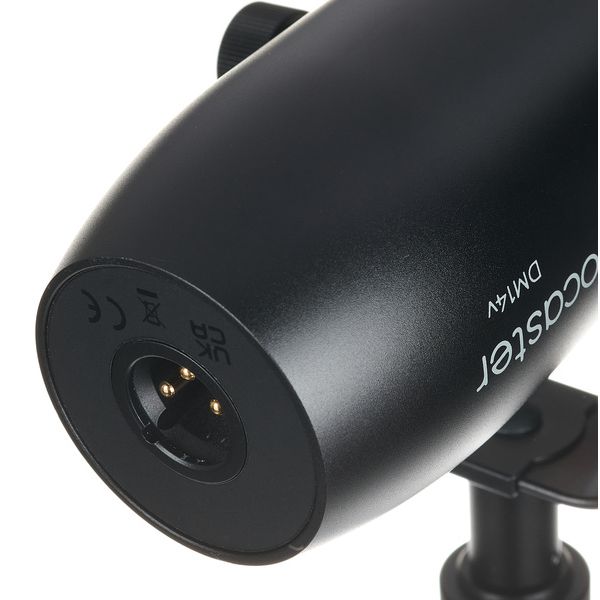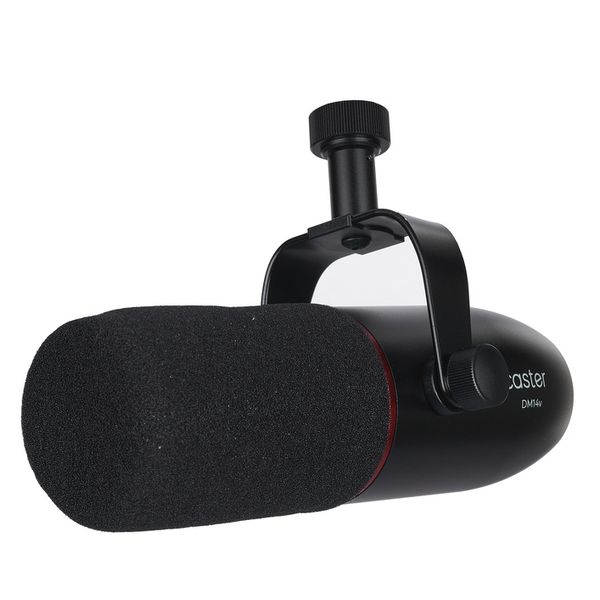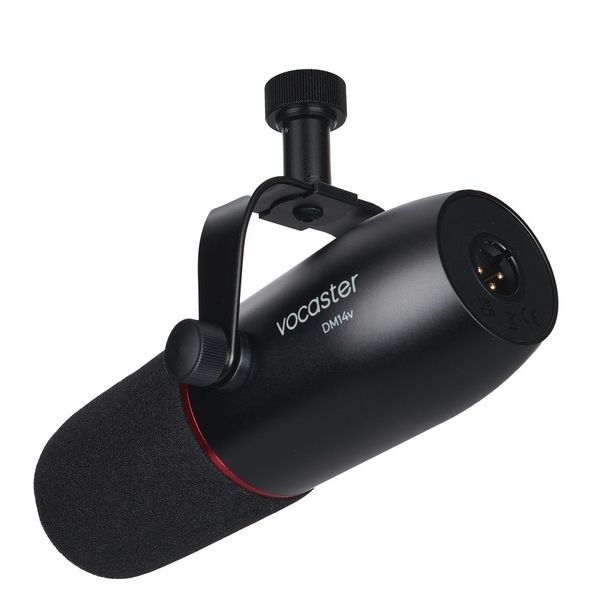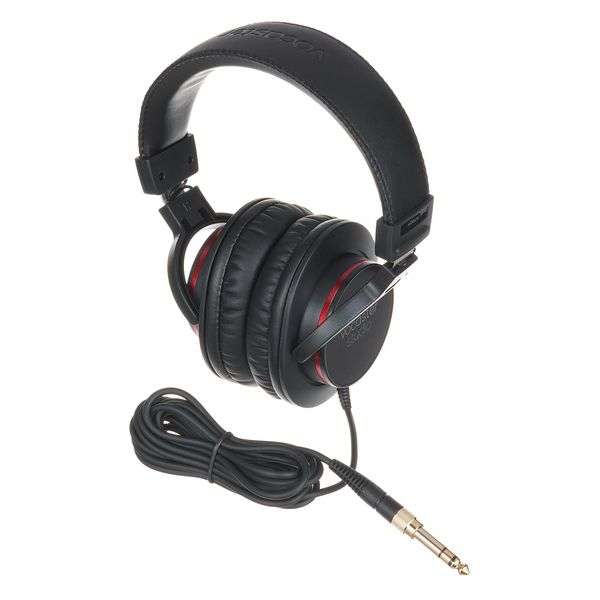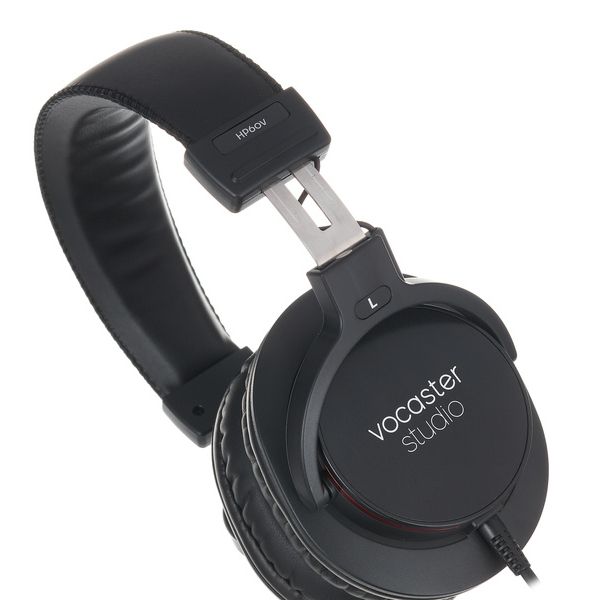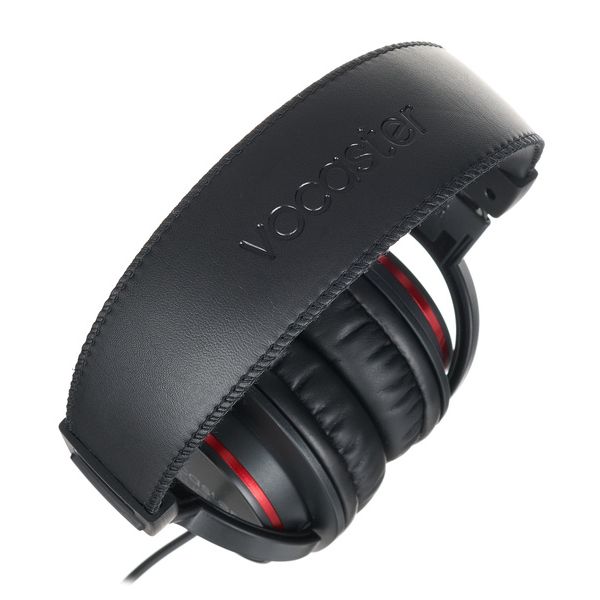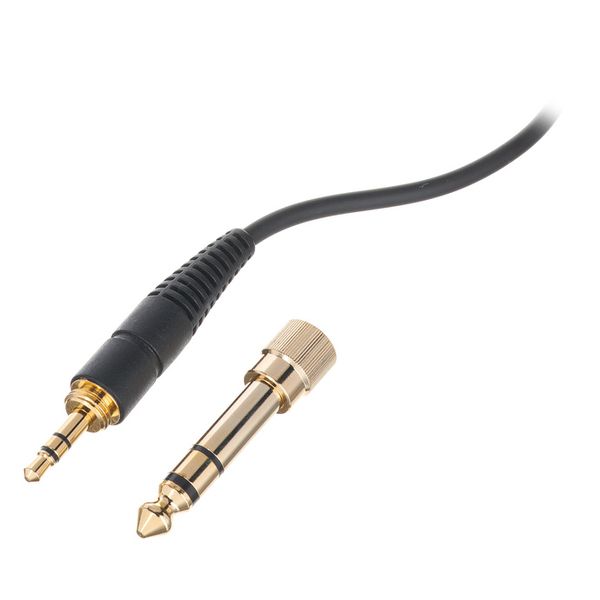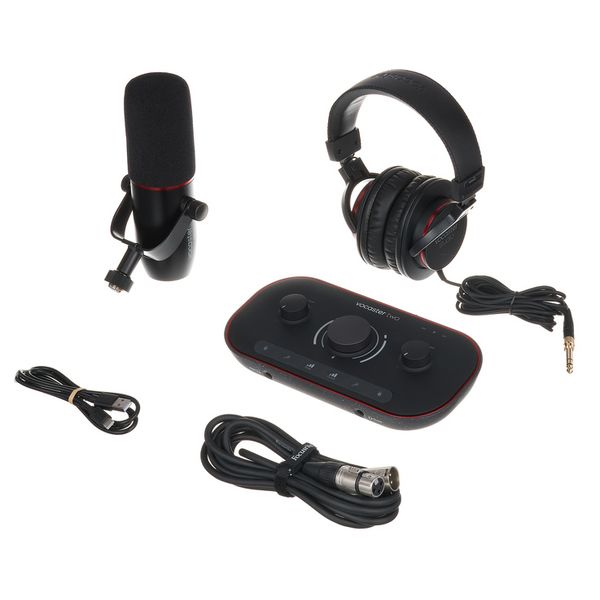As a semi-professional working across podcasting, voiceover, and the occasional remote interview, I’ve used my share of gear that promises convenience and delivers compromise. The Focusrite Vocaster Two Studio stands out by actually making the recording process easier without undermining audio quality—something I didn’t quite expect at this price point.
Design & Setup
Out of the box, the setup is genuinely quick. The interface is compact and cleanly laid out, with smart visual cues (gain ring meters!) and tactile, clearly labeled controls. It’s clearly designed for a creator’s workflow—not a studio rat’s—but that’s not a criticism. This thing lives on the desk, not in a rack, and it fits that role perfectly.
The DM14v dynamic mic is no-nonsense, with a tight pickup pattern that makes untreated rooms less of a problem. The HP60v headphones aren’t studio reference-grade, but they’re detailed enough to catch plosives, noise issues, and tone. Together, they make a surprisingly competent voice chain for spoken-word content.
Preamps That Pull Their Weight
The biggest technical win here is the preamps—with up to 70 dB of gain, they handle gain-hungry mics like the SM7B or RE20 without complaint. And not just with volume—they’re clean. I tested side-by-side with a Scarlett 2i2 and found the noise floor noticeably lower at high gain.
That alone is worth noting. Add in the fact that the unit has built-in loopback, mix-minus for call-ins, and a second mic input, and you start seeing the edge this has over traditional beginner interfaces.
Voice Features That Aren’t Gimmicks
Where this setup leans into its podcast/creator audience is the Auto Gain and Voice Enhancer presets. These features could easily be throwaways—but they aren’t. The Auto Gain actually works, setting usable levels within seconds. The Voice Enhancer options (Clean, Warm, Bright) are subtle and well-EQ’d. I wouldn’t use them on a mastered track, but for fast turnaround content? Gold.
Bluetooth audio input and dual headphone outs round it out nicely—no need to patch in awkward adapters or third-party routing software.
Vocaster Hub – Simple, But It Works
The companion software does what it should: routing, monitoring, and fine-tuning. It’s not a DAW replacement, and it’s not trying to be. But it does mean you’re not diving into system settings every time you record a Zoom call or want to monitor playback.
The included software bundle is generous if you’re just getting started, though as someone already living in Reaper and RX, I didn’t get much from it.
Where It Falls Short
It’s not a full studio interface. There are no line inputs, no MIDI, no per-channel phantom power. And while the mic and headphones are solid, anyone already invested in better gear won’t be swapping out their RE20 or DT 770s.
But here’s the thing: that’s not what this kit is for. This is for creators who need reliable, good-sounding audio with minimal fuss—and it nails that brief.
Bottom Line
The Vocaster Two Studio isn’t about bells and whistles—it’s about frictionless workflow for voice-first creators. It’s rare that gear at this level feels so purpose-built. If your priority is capturing clear, professional voice recordings quickly and consistently, this setup earns its place on your desk.
Rating: 4.5/5


